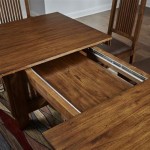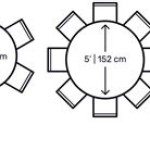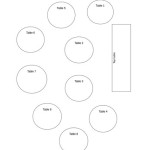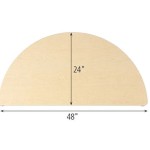How To Draw a Dining Room Table
Creating a realistic and visually appealing drawing of a dining room table involves understanding perspective, proportion, and basic drawing techniques. This article provides a detailed guide on how to draw a dining room table, breaking down the process into manageable steps, suitable for beginners and experienced artists alike. It emphasizes the importance of accurate measurements and the application of shading to enhance the depth and realism of the drawing.
Establishing the Foundation: Perspective and Basic Shapes
The foundation of a successful dining room table drawing lies in establishing the correct perspective. Perspective is the technique of depicting three-dimensional objects and spatial relationships on a two-dimensional surface. This involves understanding vanishing points and horizon lines, which dictate how objects appear to recede into the distance.
Begin by lightly sketching a horizon line across the page. This line represents the viewer's eye level. The placement of the horizon line will affect the overall perspective of the table. A horizon line placed higher on the page will result in a more bird's-eye view, while a lower horizon line will give a more grounded perspective.
Next, determine the number of vanishing points to be used. For a simple, straightforward depiction of a dining room table, one or two-point perspective is typically sufficient. In one-point perspective, all lines converge at a single vanishing point on the horizon line, making it ideal for depicting the table face-on. Two-point perspective, on the other hand, uses two vanishing points, providing a more dynamic and realistic view, especially when the table is viewed at an angle.
Once the horizon line and vanishing points are established, lightly sketch the basic shape of the table's top surface. This is typically a rectangle or oval. Use perspective lines that converge towards the vanishing point(s) to guide the shape of the table top, ensuring that it diminishes in size as it recedes into the distance. For a rectangular table, draw lines from the corners of the rectangle to the vanishing point(s). These lines will serve as guides for determining the table top's depth and shape.
After establishing the table top's shape, sketch the legs. Pay close attention to their placement and proportion relative to the table top. The legs should appear to support the table evenly and be of appropriate thickness. Use perspective lines to ensure that the legs also diminish in size as they recede into the distance. For a more complex table design, such as trestle tables or those with curved legs, take extra care in mapping out the shapes and curves accurately, using light pencil strokes to refine the forms.
Before moving on, review the basic shapes and perspective lines. Ensure that the overall proportions and perspective are accurate. Adjust the sketch as needed to correct any errors or inconsistencies. This initial stage is crucial for ensuring that the final drawing is visually correct and well-proportioned.
Refining the Lines and Adding Details
With the basic shapes and perspective lines established, the next step involves refining the lines and adding details to the drawing. This stage focuses on defining the edges of the table, adding texture, and incorporating any decorative elements.
Begin by darkening the lines that define the edges of the table. Use a smooth, consistent line weight to create a clean and polished look. Pay attention to the corners and edges of the table, ensuring that they are accurately represented. If the table has rounded edges or corners, take extra care in drawing these curves smoothly and accurately.
Next, add details to the table's surface. This can include wood grain, scratches, or other imperfections that add character and realism to the drawing. Use light, delicate lines to suggest the texture of the wood. Avoid making the lines too dark or heavy, as this can detract from the overall realism of the drawing. Vary the direction and density of the lines to create a more natural and organic look.
Incorporate any decorative elements that are present on the table. This can include carvings, inlays, or other embellishments. Pay close attention to the details of these elements, accurately representing their shapes and proportions. Use light and shadow to highlight these details, adding depth and dimension to the drawing.
Consider adding tableware to the table to provide context and enhance the composition. This can include plates, glasses, silverware, and other dining accessories. Pay attention to the placement and arrangement of these items, ensuring that they are proportionally correct and visually appealing. Use perspective lines to guide the placement of these items, ensuring that they appear to sit naturally on the table.
Once the details have been added, review the drawing for any areas that need further refinement. Adjust the line weights as needed to emphasize certain areas and create visual interest. Erase any unnecessary guidelines or construction lines to create a clean and polished final drawing.
Applying Shading and Creating Depth
The final stage in drawing a dining room table involves applying shading to create depth and dimension. Shading is the technique of using light and shadow to create the illusion of form and volume on a two-dimensional surface. This involves understanding light sources and how they affect the appearance of objects.
Begin by determining the direction of the light source. This will dictate where the shadows fall on the table and surrounding objects. For a realistic effect, the light source should be consistent throughout the drawing. Imagine a lightbulb or window illuminating the scene, and use this as a guide for placing the shadows.
Apply shading to the table top and legs, using a range of values from light to dark. The areas that are closest to the light source should be lighter, while the areas that are furthest away should be darker. Use blending techniques to create smooth transitions between the different values.
Create cast shadows on the floor or surrounding surfaces. These shadows are created when the table blocks the light, casting a dark area on the surface behind it. The shape and size of the cast shadows will depend on the angle and intensity of the light source. Pay attention to the way the cast shadows interact with other objects in the scene, adding depth and realism to the drawing.
Use hatching, cross-hatching, or stippling techniques to create texture and depth in the shading. Hatching involves drawing parallel lines close together to create a shaded area. Cross-hatching involves drawing intersecting lines to create a darker shaded area. Stippling involves using small dots to create a textured effect.
Consider the materials of the table when applying shading. A wooden table will have a different texture and reflective quality than a metal or glass table. Use shading techniques that are appropriate for the material being depicted. For example, a wooden table may have subtle variations in tone to represent wood grain, while a glass table may have highlights and reflections that need to be carefully rendered.
Once the shading has been applied, review the drawing for any areas that need further refinement. Adjust the values as needed to create a balanced and harmonious overall effect. Add highlights to the areas that are closest to the light source, creating a sense of luminosity and depth. Erase any unnecessary shading to create a clean and polished final drawing.
By following these steps, it is possible to create a realistic and visually appealing drawing of a dining room table. The techniques outlined in this article provide a foundation for understanding perspective, proportion, and shading – essential skills for any aspiring artist.

How To Draw Dining Room Table Step By

How To Draw Dining Table With Chairs Furniture Step By Drawingtutorials101 Com

How To Draw Dining Room Table Step By

How To Draw Dining Table With Chairs Printable Step By Drawing Sheet Interior Design Sketches Drawings Furniture

How To Draw A Dining Table Step By For Beginners

How To Draw A Dining Room Using Two Point Perspective Modern Design Bedroom Interior Luxury

How To Draw A Dining Table Step By 10 Easy Phase

How To Draw A Dining Room Sets In Two Point Perspective Step By Art

Single One Line Drawing Modern Dining Table In The Kitchen Room Concept Continuous Draw Design Graphic Vector Ilration

Dinner Table Furniture Sketch Tables Diy








